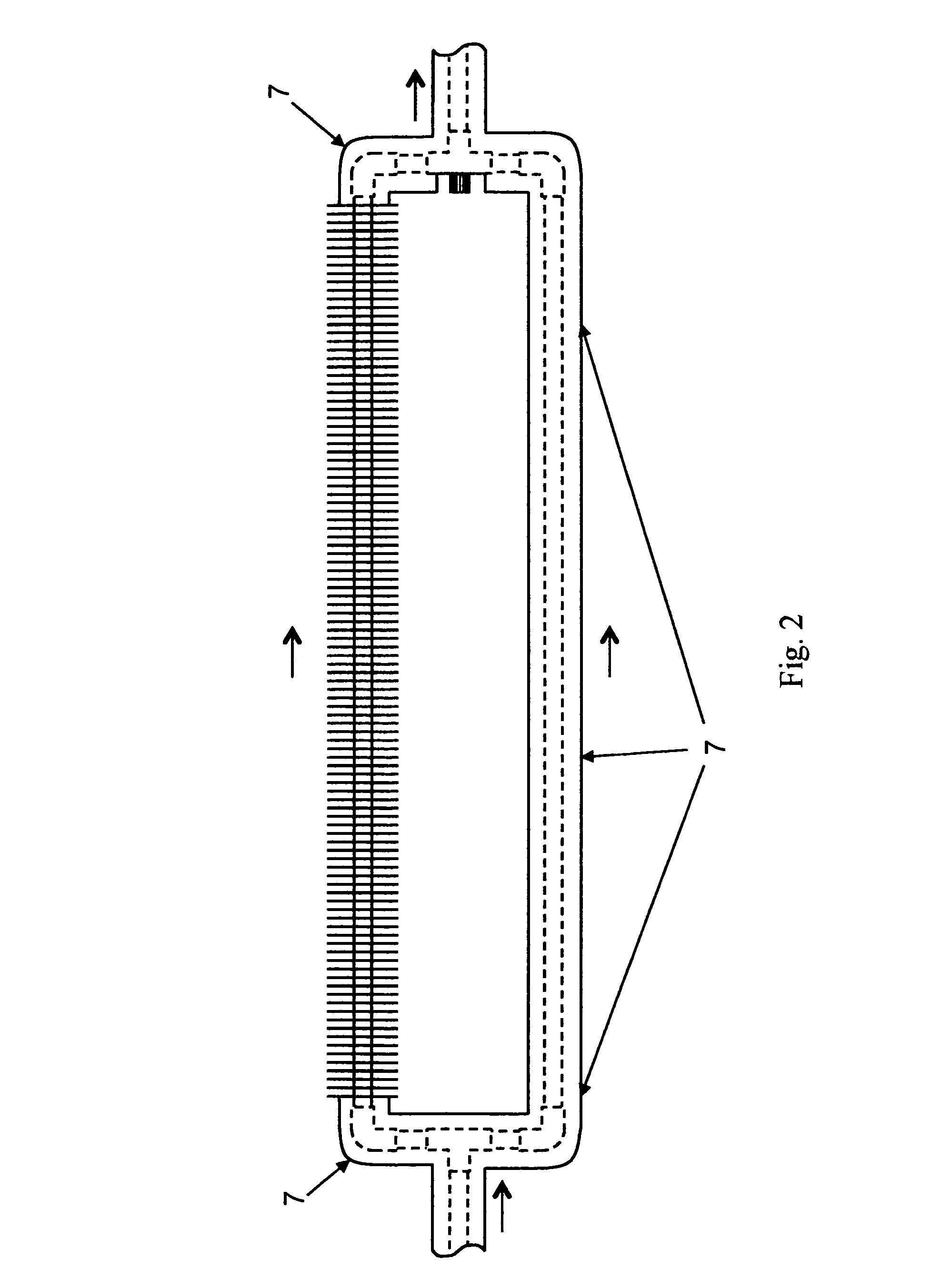Over-temperature protection for flowing fluid systems
a fluid system and over-temperature protection technology, applied in the field of flowing fluid systems, can solve the problems of loss of load, large heat supply from solar collectors or collectors, and many solar thermal heating applications in non-drainback systems, and achieve the effects of reducing waste of energy, saving energy, and reducing waste of resources
- Summary
- Abstract
- Description
- Claims
- Application Information
AI Technical Summary
Benefits of technology
Problems solved by technology
Method used
Image
Examples
Embodiment Construction
1. Definitions
[0059]Mixing valve. A mixing valve is a thermostatically controlled valve that mixes or modulates inlet fluid streams, one hot and one cold, to adjust the temperature of an outlet fluid stream to a preset temperature range. Mixing valves are also known as blending valves and tempering valves.
[0060]Some more recent mixing valves for domestic hot water applications include a feature that shuts off the fluid flow through the valve completely if the outlet temperature cannot be limited, usually due to inlet cold fluid temperature or pressure issues. The mixing valves in the present invention do not include this feature, and always allow flow regardless of outlet fluid temperature.
[0061]Mixing valves can be mechanical or electromechanical. Mechanical mixing valves use the temperature-dependent expansion and contraction properties of special materials, such as phase-changing wax, bimetallic components, or certain fluids, and require no electricity or external power. Electrom...
PUM
 Login to View More
Login to View More Abstract
Description
Claims
Application Information
 Login to View More
Login to View More - R&D
- Intellectual Property
- Life Sciences
- Materials
- Tech Scout
- Unparalleled Data Quality
- Higher Quality Content
- 60% Fewer Hallucinations
Browse by: Latest US Patents, China's latest patents, Technical Efficacy Thesaurus, Application Domain, Technology Topic, Popular Technical Reports.
© 2025 PatSnap. All rights reserved.Legal|Privacy policy|Modern Slavery Act Transparency Statement|Sitemap|About US| Contact US: help@patsnap.com



